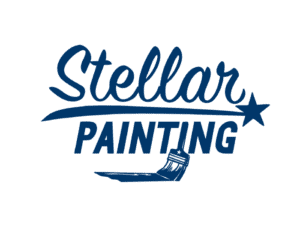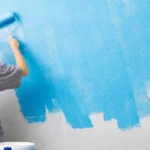A Professional Guide to Surface Preparation for Painting
When it comes to painting, the secret to a flawless finish lies in the often overlooked but crucial step of surface preparation. Whether you’re a seasoned professional or a DIY enthusiast, understanding the ins and outs of this process is key to achieving a long-lasting and visually stunning paint job. In this comprehensive guide, we’ll teach you how professionals work surface preparation for painting, providing you with expert insights and a step-by-step walkthrough.
Now, whether you’re a seasoned painter or someone who’s planning to start your own DIY projects, the goal remains the same: a durable and visually pleasing finish. To achieve this, we’ll break down the surface preparation process into different steps, so that you can understand the process without a problem.
Understanding the Importance of Surface Preparation
Why is surface preparation so important? It helps paint stick to surfaces and prevents cracking, peeling, and other issues in painting. But it’s not just about looks; it’s about practicality too. A well-prepared surface is like a smooth canvas for your chosen paint. It eliminates the bumps and imperfections before the painting job so that your painting project looks smooth and beautiful, without any issues.
Without surface preparation for painting, your painting project may come up differently than what you intended. Old paint, cracks, and the texture of the surface can affect the painting coat and can turn in varied results.
Although it can take a lot of time, professionals never skip the preparation phase of a painting project. Cleaning, sanding, and repairs are all important for a thorough and smooth residential paint job. It doesn’t matter if you have a oil or water-based paint or not, it won’t coat your walls properly without preparation.
Cleaning and Inspection
The first step in any surface preparation process is a thorough cleaning and inspection of the area to be painted. Professionals understand the importance of removing dirt, grease, and other contaminants that could compromise paint adhesion. They usually use a mild detergent or a specialized cleaner appropriate for cleaning specific surface types.
Inspect the surface for any signs of damage, such as cracks, holes, or uneven textures. Make sure to clean off any dirt and grime from the surface as well. Addressing these issues at the start prevents them from surfacing later in the form of imperfections on your freshly painted walls.
By paying attention to the cleaning step, you set the foundations for your paint, which is important for a smooth finish and even a paint job. Cleaning and inspection are important for any kind of painting project, whether it’s an exterior or interior one.
Repair and Patching
Professionals take the time to repair any imperfections discovered during the inspection phase. This includes filling cracks, holes, and gaps with an appropriate filler or patching compound. The goal is to create a smooth and even surface for the paint to stick to, for a smooth and even finish.
For larger imperfections, consider using a mesh tape before applying the filler to reinforce the repair. Sand the patched areas once they are dry to create a seamless transition between the repaired spots and the surrounding surface.
Repairing your walls and the other areas where you’ll apply paint makes sure that your new paint can appear smooth and even on the surfaces. You won’t find any cracks or peeling when a professional team like Stellar Painting is your partner in surface preparation for painting projects.
Sanding
Sanding is an important step that professionals always take. It not only smoothens the surface but also provides a key for the paint to grip onto. Professionals usually use coarse-grit sandpapers to remove any rough spots or uneven surfaces before using finer grits to achieve a smooth finish.
Pay special attention to edges, corners, and any detailed or intricate areas. The goal is to create a uniform surface texture across the entire painting area. After sanding, be sure to remove any dust with a tack cloth or a damp sponge.
After sanding, inspect each part of the surface again to make sure you didn’t miss any spots. You don’t want to find rough areas before moving to the next step, which is adding a primer.
Priming
Applying a high-quality primer creates a bond between the surface and the paint, improving adhesion and ensuring a consistent finish. Choose a primer that is suitable for the specific surface you are working on, whether it’s wood, drywall, or metal.
Priming is particularly crucial for surfaces that have been repaired or patched. It seals the repaired areas, preventing them from absorbing too much paint and appearing as discolored spots on the final surface.
To Wrap It All Up
Mastering the skill of surface preparation for painting is the key to achieving a professional-looking paint job that not only enhances the aesthetics of your space but also ensures long-lasting durability. From cleaning and inspection to meticulous repairs, sanding, and priming, each step plays an important role in the overall success of your painting project.
By following the steps outlined in this guide, you’ll be well on your way to approaching surface preparation like an experienced professional. Remember, investing time and effort into this phase sets the stage for a paint job that looks beautiful and withstands the test of time.
If you’re looking for a professional painting company to work on your next project, call Stellar Painting. We’re a reliable and trusted team of painters who handle exterior painting, interior residential painting, and color consultation in the Texas area. Our surface preparation is thorough, to give you the best painting job in the area.


